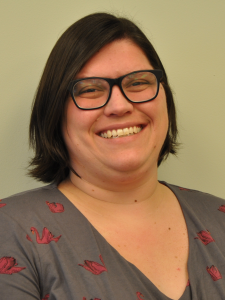 By Meghan Olsen Biebighauser
By Meghan Olsen Biebighauser
Month Nine of this pandemic has me thinking about how connected we are to our place – like, our literal coordinates. For the most part, I haven’t left my zip code in months. The walks that my family take are around the same couple of blocks; the people we wave to as we walk are the same couple of neighbors. My working-at-home desk is on the second floor overlooking the street and – I’m totally not a stalker – but ask me anything about my neighbors’ comings and goings, dog walking schedules, food delivery preferences, because I see it all.
We have an email chain for our block and, from my perch, I’ve been able to help my neighbors redirect a pizza delivery to the right house, locate their kids, and even track down some runaway urban chickens. I’m getting to know my neighbors much more intimately than I did back when it was safe to come and go, as well as to gather together.
I’m also thinking about how the most amazing leadership and service that we’ve seen this year has arisen out of neighborhoods. In the weeks that followed the murder of George Floyd by the police, just a few blocks from my perch above my street, we saw a groundswell of community caretaking through mutual aid networks. While I was volunteering at Holy Trinity during the days of the uprising, whenever we encountered a need that we couldn’t meet on site, neighbors were ready to jump in and take care of it; we only needed to call on them.
“I picture the holy family arriving in a new neighborhood, in need of just about everything, and being cared for by neighbors.”
I met a man who needed to get home from work, but public transit had been shut down to the area. A couple of clicks in a Facebook mutual aid group and five minutes later a neighbor arrived to give him a ride home.
The next day, a woman showed up and explained that she was leaving an abusive partner and needed a place to stay. After trying all of the typical pathways into the systems that exist for these situations, we were at a dead end. Another few clicks on my phone and she had an offer of a place to stay with two women (who were happy to welcome her for as long as she needed) and another woman who would provide transport from the church to her new hosts.
It was magical. Much of those emergency networks have quieted down as things have calmed, but once a week my spouse, Jeff, still does laundry for those neighbors of ours living in encampments, or in hotels. Once a week someone drops off a laundry bag of dirty clothes to our backyard, and Jeff washes, dries, and folds an individual’s clothing and leaves it back out in the yard for a pickup. It’s an act of service that’s intimate and entirely powered by neighbors.
THESE VERY HUMANE INTERACTIONS ALL strike me as beautiful. But it’s all happening because of a failure of leadership within the existing structures, systems, and safety nets. It fails when gridlock grips our public leaders.
From the mishandling of Covid-19 by the federal government, to the crisis of homelessness in our state, to the police brutality that has long been a problem in our city, local communities have had to step in and create alternate systems to care for one another when things have fallen apart.
Even in my own work in the synod office on the issue of payday lending, it’s become clear that neither Congress nor the Minnesota legislature will be the place for the action that’s so urgently needed to protect financially vulnerable Minnesotans. Who will step in to protect these neighbors? Apparently, it will be our local communities.
“Even in my own work in the synod office on the issue of payday lending, it’s become clear that neither Congress nor the Minnesota legislature will be the place for the action that’s so urgently needed to protect financially vulnerable Minnesotans.”
The city of Moorhead was the first community in Minnesota (and one of the very first in the nation) to pass a payday lending reform ordinance. This Northwestern Minnesota city won’t be the last. Neighbors in cities throughout Minnesota are launching campaigns to follow suit because, when larger systems fail (and they often do), we take care of the people closest to us – neighbor to neighbor.
This is all on my mind this week as I picture the holy family arriving in a new neighborhood, in need of just about everything, and being cared for by neighbors. The midwives showed up to assist Mary, just as they’d done with all the moms in the neighborhood for years. People in the neighborhood made sure they were fed and comfortable as Mary recovered from childbirth.
Until the day Mary sings of, the day that we work and pray for when God causes empires to crumble and tears tyrants from their thrones, we fill in the cracks in the crumbling structures with little glimpses of light by taking care of one another, neighbor by neighbor.

